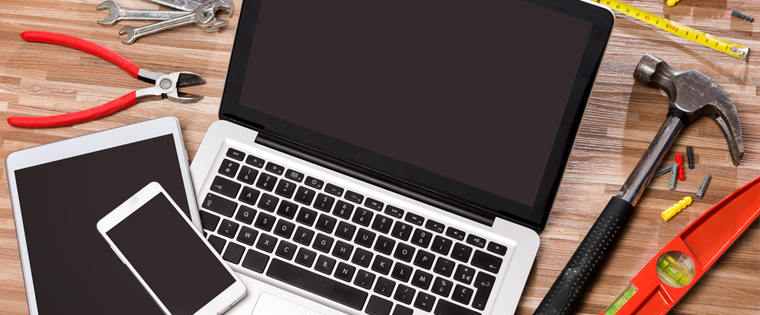A Complete Training Portal for Multi-device Mobile Learners

Early training portal technologies were training-centric where learners had to configure their systems according to the training format and therefore, it was difficult and expensive to deliver training in various formats. Along with the training content, plugin installations and configuration settings were provided to learners. For example, if a course was compatible with a particular operating system and Internet browser, required a Flash player to play, and the pop-up blocker was to be disabled, and cookies enabled, it was the responsibility of the learners to setup the minimum requirements to access the course.
Now technology has completely changed the approach. Latest technologies are focused on delivering trainings that are learner-centric. Though we have a wide variety of devices and applications, we can deliver training without any new installations, plugins, or restrictions of a particular device or browser.
Let’s see some of ways in which learners can access training.
Browser-based:
There are about 25 different browsers; the most popular being Internet Explorer, Google Chrome, Mozilla Firefox, Safari, and Opera. Learners can use any of these browsers. Your training portal should be accessible on all these browsers.
Operating Systems:
Around 66 different operating systems are available nowadays, of which Windows, iOS, Linux, Android, etc. are the most popular. There are many challenges in developing training portals compatible with all operating systems, because they have different features, file formats, and are developed using completely different platforms.
Desktop Devices:
Personal Computers (PC) or Laptops perform what a desktop does, with more flexibility. E-Learning created for desktops work fine on laptops because of their similar configurations.
Mobile Devices:
Mobile devices vary not only in screen size but also in their operating systems. Devices such as tablets or Smartphones (e.g. iPads, iPhones, Android phones etc.), have different screen sizes and can be viewed in portrait or landscape modes. All these factors need to be considered to ensure the training portal works on all of them.
Mobile Browsers or Apps:
Accessing training on a mobile browser is a lot slower than accessing it through a mobile app. Learners may want to download it and view it offline. Your training portal should be able to deliver the same in both formats.
Based on the Internet Connection:
Some devices have high speed and good connectivity while connectivity is limited in some cases; it might get disconnected while traveling. Some devices have Wi-Fi while others run on mobile data. Learners face different experiences accessing trainings based on their Internet connection. Some learners prefer downloading and viewing it offline.

Having a single and fully integrated training portal that delivers training on multiple devices for mobile learners is no longer impossible. Now almost all training portals deliver on all types of devices. For example, let us take the most popular and open-source training portal MOODLE, which can deliver training to all types of learners discussed above.
Some of the important features of the MOODLE LMS which can help set up a single portal to handle all challenges of multi-device mobile learners are discussed below.
HTML5 and Responsive Design to Support all Internet Browsers:
Moodle LMS was developed based on HTML5 with responsive design. The same LMS works perfectly fine on all Internet browsers. Whether it is a desktop or mobile browser, it adjusts automatically according to the screen size, without any additional plugins. Learners can switch the view from landscape to portrait mode or vice versa to adjust the display.To know more about the importance of HTML5 and Responsive Design, read my earlier blog, E-learning to M-learning: Role of HTML5.
Multiple Operating System Compatibility:
Moodle is fully compatible with all popular operating systems and works fine on Windows, iOS, Android, etc. You don’t need to have a separate version for each OS.
Desktop Devices compatibility:
You can access this training portal just like other applications through any Internet browser available in your computer without installing additional plugins.
Compatible with all Mobile Devices and Browsers:
As the portal is developed in HTML5, it will work on all mobile devices with varying screen sizes. It can be accessed directly through the default Internet mobile browser or any third party browsers installed from app stores. The main advantage is that there is no need for multiple versions based on devices. The same application works for iOS and Android phones.
Mobile App:
It has its own free mobile app, available in both Android and IOS app stores. You can customize the look and feel based on your design standards, if needed. You just need to enable the mobile access feature in the portal. Learners can install the app, enter their login credentials, and access the training content. When you add new training content to the training portal, it will synchronize it with the mobile app. Learners can access and complete the training in the mobile app. Training progress will be stored on the server so that they don’t have to redo it again when they access from other devices such as a desktop.
Offline Mobile Player for Poor or No Internet Connection:
The mobile app has a very useful feature called offline player. Learners can download the training content when they have a good Internet connection or use a Wi-Fi connection. Downloaded content can be viewed anytime, without Internet connection. Training progress can be stored in the mobile player and training records are synchronized with the server when Internet connectivity is available.
In this blog, I haven’t considered the development of training content, but it is also important for training content to be compatible with all devices. Almost all eLearning authoring tools such as Lectora, Captivate, Articulate 360 produce HTML5 and responsive design eLearning – courses which are compatible with all devices which. Like a common training portal, we can develop common eLearning courses for all mobile devices.
Hope this blog gave you information about learners’ devices and how training portals such as MOODLE can help you deliver and manage training on all types of devices.





